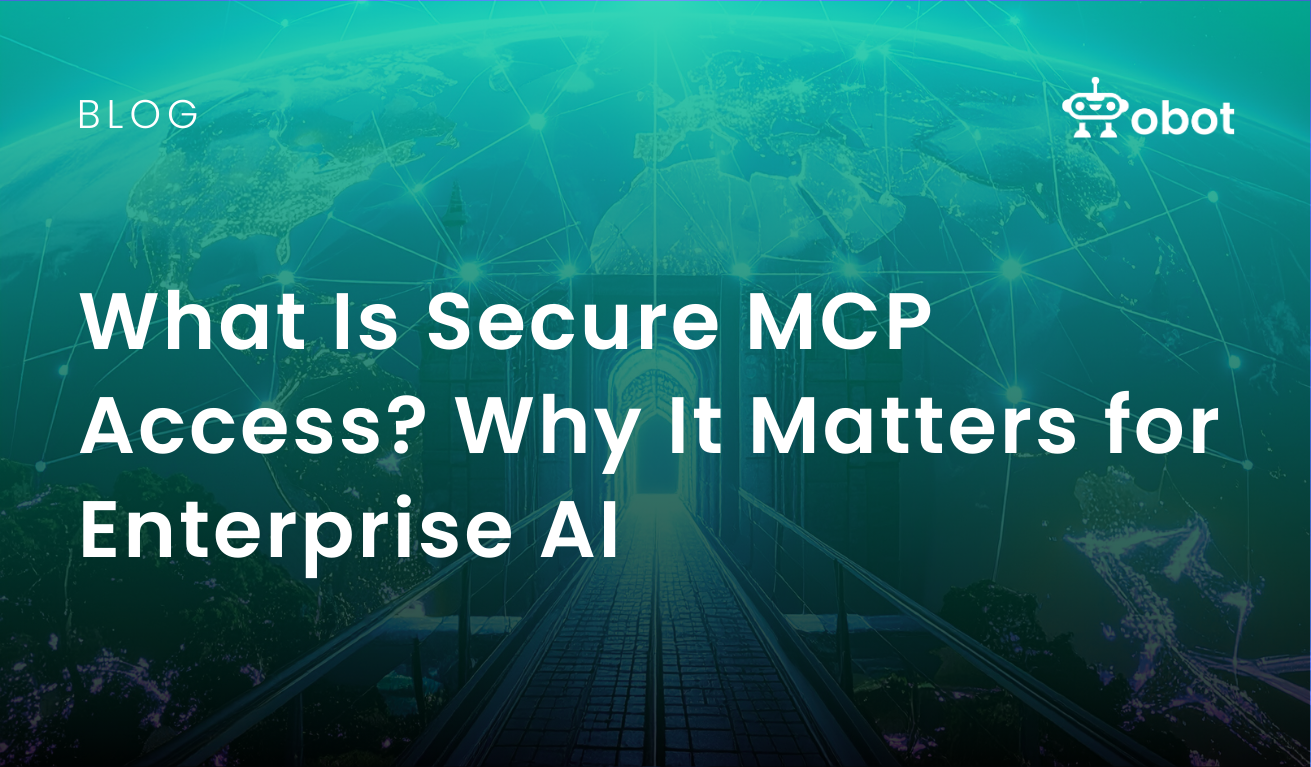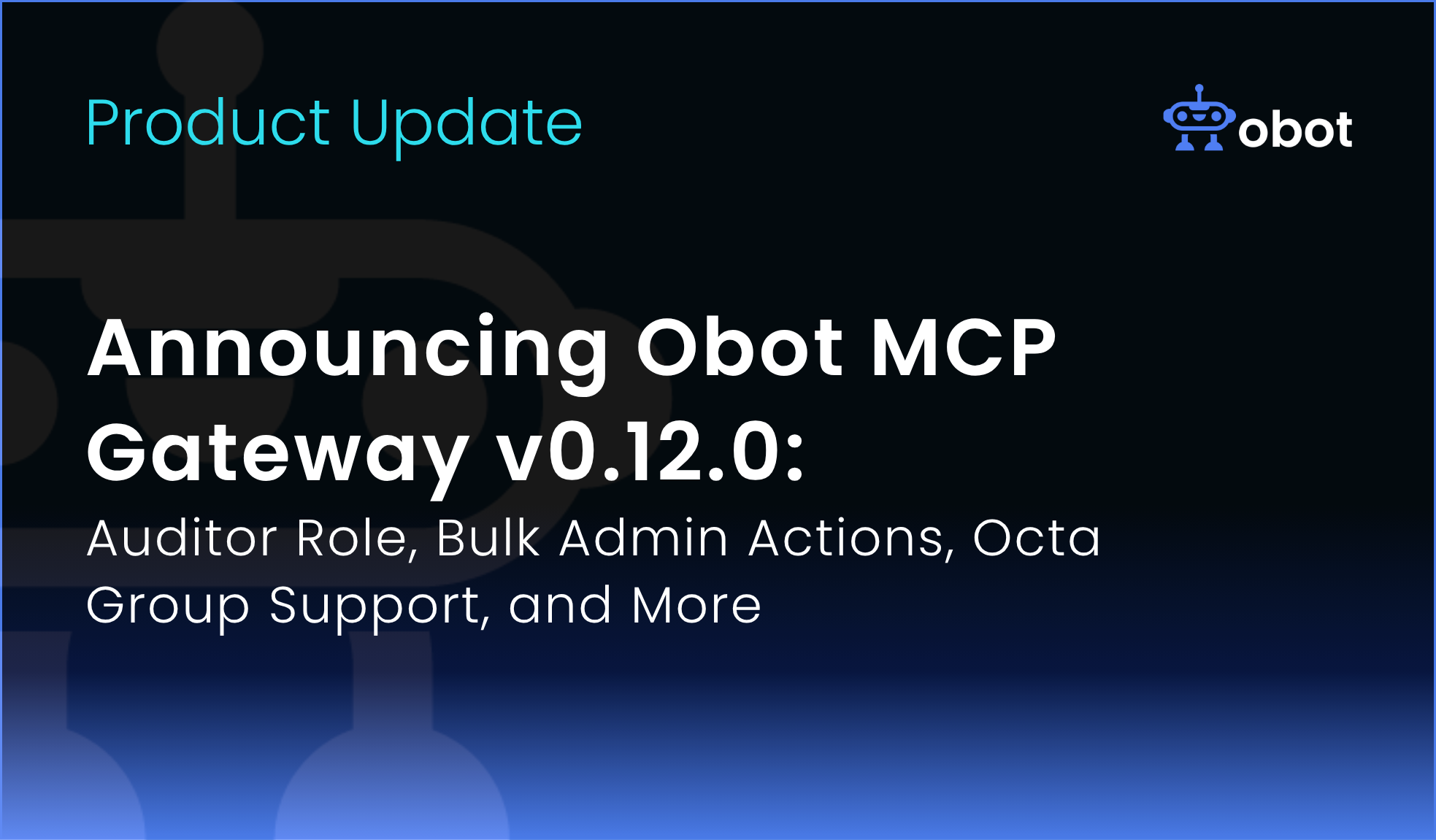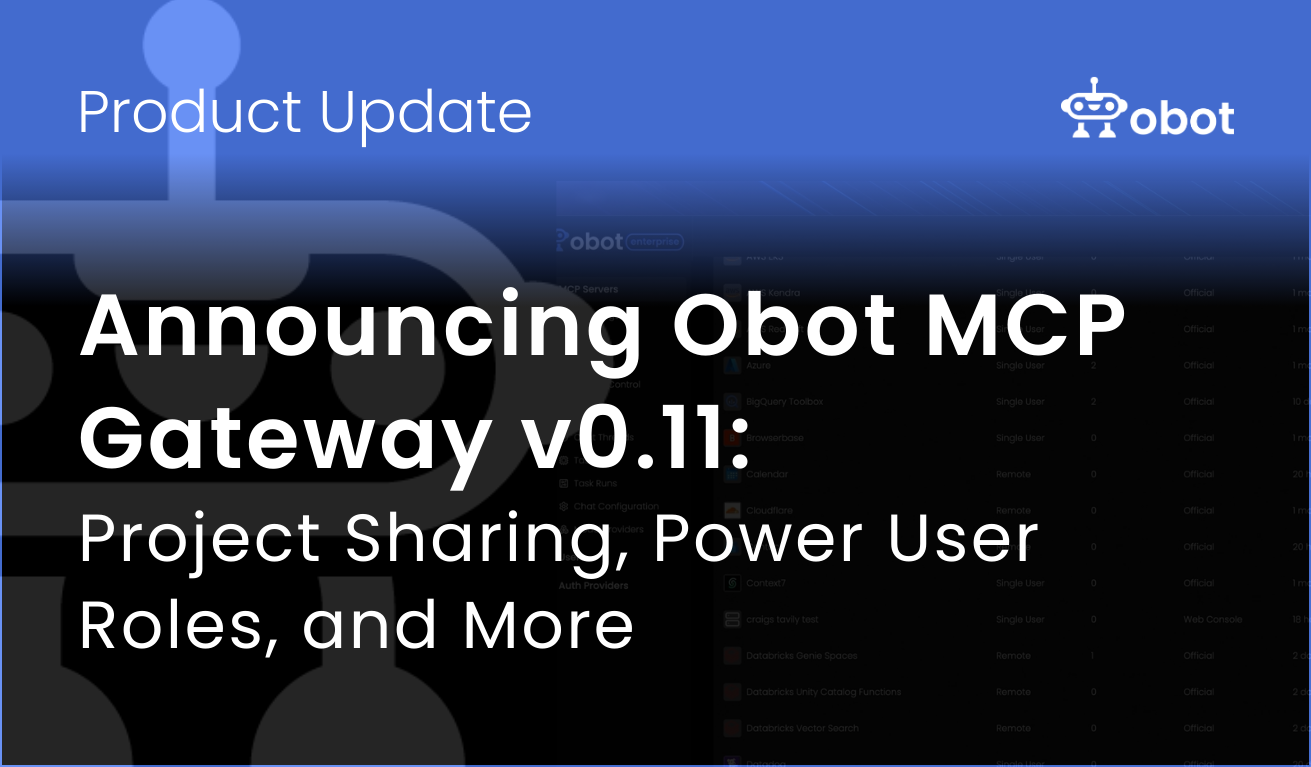We have posted alot about the security risks associated with MCP servers, and how important it is to address them as you are expanding adoption of MCPs across your organization. As organizations expand access to MCP servers, they are starting to think about secure MCP access holistically, and building strategies to ensure that they can deliver MCP servers centrally without incuring unacceptable risk.
In this post, I’ll explain the concept of secure MCP access, explain why it matters, and share a bit about how we’ve approached addressing it at Obot AI.
The Rise of MCPs in the Enterprise
If you’re reading this, you probably already know that MCP stands for Model Context Protocol. It’s quickly becoming the backbone for connecting large language models (LLMs) with data, applications, and infrastructure within IT. The rapid adoption of the MCP protocol means developers are learning how to build MCP servers for internal use cases, and both vendors and the open source community are publishing new MCP servers every day.
But here’s the catch: as teams spin up more MCP servers—sometimes in the cloud, sometimes on-prem, sometimes just for a quick experiment—IT loses track. Suddenly, you’ve got a sprawl of endpoints, each with its own quirks, credentials, and risks. Shadow AI is real, and it’s not just a buzzword. It can be a governance nightmare.
What Does “Secure MCP Access” Actually Mean?
So, what do I mean when I say “secure MCP access”? It’s not just about slapping a password on a server and calling it a day. In the enterprise, it means four things:
- Authentication: Only the right people (and systems) can connect. No more “anyone with the URL can get in.” Users need to be authenticated using existing tools like Okta and Microsoft Entra, and MCP servers need to sit behind a proxy controlling authorization policies.
- Authorization: Even after you’re in, you only get to do what you’re allowed to do. Fine-grained permissions matter. Should a user have access to an entire MCP server, or just certain tools? Should a user be able to publish an MCP server, and if so, who can they share it with? These are the key questions organizations need to ask as they consider auth policies for MCP servers.
- Encryption: All data in transit is protected. No eavesdropping, no accidental leaks.
- Auditing: Every access, every action, is logged. If something goes wrong, you know exactly what happened and when. But even once you set up Auditing, who can see those logs? Should they be visible to anyone in IT? What type of data is in them? Organizations need to think through the entire approach to looking at the audit trail of an MCP server, which can include the prompt, response, and possibly elicitation answers.
Without all four, you’re leaving doors open—and exposing your org to risk.
The Risks of Getting It Wrong
The key risk to getting this all wrong is that users are bringing MCPs onto the network, or using them with approved SaaS applications, sharing their API keys or OAuth credentials, and you have no idea about it. It’s this risk that has organizations looking to implement MCP gateways.
Worse, when IT can’t see what’s running or who’s using it, you lose the ability to enforce compliance. That’s a big deal if you’re in a regulated industry—or if you are worried about the security of your customers data.
How Obot MCP Gateway Delivers Secure MCP Access
When we first started using MCP servers, we were amazed at their impact, and could easily imagine how rapidly they would scale for any organization. It is exactly why we built Obot MCP Gateway, to provide an open source project that would allow organizations to move fast with AI, but without the chaos and risk.
Here’s how we approached it:
- Centralized Authentication: We integrate with major authentication providers like Okta and Entra to identify authorized users, and ensure they can access your organizations MCP directory.
- Fine-Grained Access Control: IT uses Obot to define exactly who can see, connect to, and use each MCP server. Policies are enforced at every step.
- Secure Proxying and Logging: All traffic goes through a secure MCP proxy, with full logging and policy checks. No more “rogue” connections.
- Role-Based Catalog: Users only see the MCP servers they’re allowed to use. When they find an MCP that is useful, they have docs, and the ability to connect them with any MCP client.
- Audit Trails: Every request, every action, is tracked. If you need to investigate, you have the full picture.
We don’t want to just lock things down—Obot is about making it easy for the right people to do the right things, safely.
The Benefits: For IT and for Users
For IT teams, secure MCP access means less risk, less firefighting, and more confidence that you’re meeting your compliance obligations. You get a single pane of glass to manage everything, with real-time visibility and control.
For end users, it means you can actually find and use the AI tools you need—without jumping through hoops or worrying about breaking the rules. The catalog is curated, connections are safe, and you can focus on your work.
Best Practices for Secure MCP Access
If you’re just starting out, here’s what I recommend:
- Inventory and Onboard All MCPs: Don’t let anything run in the shadows. Bring every server into the fold.
- Enforce Least-Privilege Access: Give users only what they need, nothing more.
- Monitor and Audit Usage: Set up alerts, review logs, and stay proactive.
- Educate Your Users: Make sure everyone understands the “why” behind secure access. It’s not just red tape—it’s protection.
Wrapping Up
Secure MCP access isn’t just a technical checkbox—it’s the foundation for safe, scalable AI adoption in the enterprise. If you want to unlock the full potential of AI without opening yourself up to risk, you need to get this right.
That’s why we built Obot MCP Gateway, and why I’m so passionate about this space. If you’re ready to take control of your AI infrastructure, check out our open-source project, request a demo, meet us in the discord community or just reach out on LinkedIn—I’d love to hear how you’re tackling these challenges.



